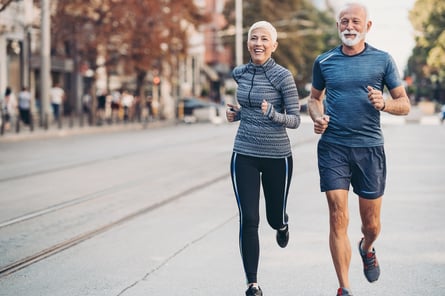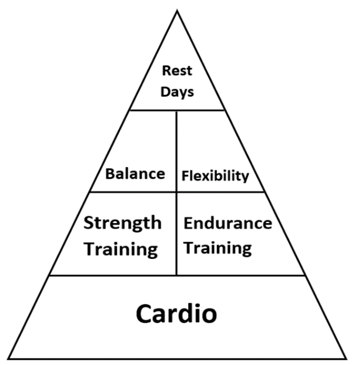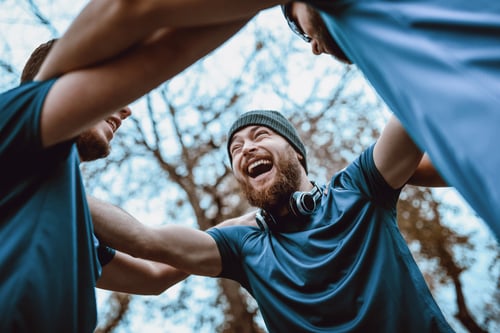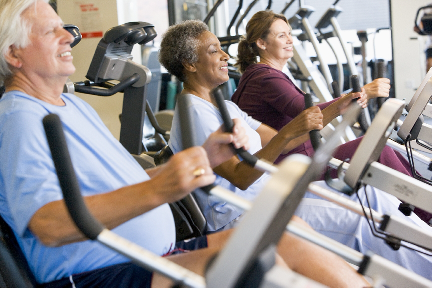In today’s fast-paced world, it’s easy to let health take a back seat to our daily responsibilities. This often results in a sedentary lifestyle, which not only affects our muscles but can also slow down our digestive system. Just like a well-oiled machine needs all its parts to move effectively, our digestive system thrives on regular movement. In this blog, we’ll explore the relationship between digestion and exercise, what the science suggests, and how to incorporate practical strategies to keep things moving. Let’s dive in and unlock the way to a healthier, happier gut!
The Science Behind Digestion and Exercise
 Exercise can affect our digestive system in many ways, mostly yielding beneficial results but occasionally leading to digestive discomfort if done incorrectly. Factors like meal timing, meal composition (amount of fat, protein, and carbs), exercise intensity, and duration all play a role. For instance, a high-fat meal before intense exercise may lead to digestive discomfort, but if the meal is given enough time to digest, it can actually improve exercise performance. So, how can exercise specifically aid digestion?
Exercise can affect our digestive system in many ways, mostly yielding beneficial results but occasionally leading to digestive discomfort if done incorrectly. Factors like meal timing, meal composition (amount of fat, protein, and carbs), exercise intensity, and duration all play a role. For instance, a high-fat meal before intense exercise may lead to digestive discomfort, but if the meal is given enough time to digest, it can actually improve exercise performance. So, how can exercise specifically aid digestion?
Science shows that exercise generally has a positive impact on digestion and gastrointestinal health. It has been shown to reduce the risk of colon cancer and accelerate gastric emptying, the time it takes for food to leave the stomach, which can help relieve constipation. However, high-intensity or prolonged exercise can sometimes cause acid reflux or other digestive discomfort in certain people, particularly based on personal medical history. Finding a balanced exercise approach maximizes benefits while minimizing potential risks.
Practical Tips for Healthy Digestion
Now that we have the baseline understanding, how can we implement movement to improve digestion? Research supports that any form of low-intensity exercise can be beneficial, such as:
- Walking: Walking at a leisurely pace can be a convenient option, whether it’s around the block, your office, or a nearby park for 10–20 minutes after meals. A higher step count also brings a range of other health benefits.
- Yoga/Tai Chi: Gentle movements and stretches are ideal to aid digestion without causing discomfort. Avoid pushing the intensity to ensure that food is digested comfortably.
- Biking: Like walking, low-intensity biking at a pace where you can maintain a conversation is a good option for digestive support. Aim for 10–20 minutes.
Overall, exercise and digestion are closely related, and a short, low-intensity walk after meals can encourage healthier digestion by speeding up gastric emptying. Allow an hour after eating before attempting high-intensity exercise to avoid digestive discomfort.


 Walking is a simple act that can have some impressive health benefits. Most of us walk to get from one place to another but let’s use this daily activity to feel better and take care of ourselves. Walking requires no special equipment or training, making it incredibly accessible to people of all ages and fitness levels. Whether you live in a city or a quiet suburban neighborhood, you can easily incorporate walking into your routine. Tailor your walking workouts to suit your schedule and preferences. Whether it's a brisk walk during your lunch break or a leisurely stroll after dinner, the flexibility and convenience of walking make it a sustainable exercise option for long-term health and fitness. Here are three reasons why walking should be prioritized in your fitness regimen.
Walking is a simple act that can have some impressive health benefits. Most of us walk to get from one place to another but let’s use this daily activity to feel better and take care of ourselves. Walking requires no special equipment or training, making it incredibly accessible to people of all ages and fitness levels. Whether you live in a city or a quiet suburban neighborhood, you can easily incorporate walking into your routine. Tailor your walking workouts to suit your schedule and preferences. Whether it's a brisk walk during your lunch break or a leisurely stroll after dinner, the flexibility and convenience of walking make it a sustainable exercise option for long-term health and fitness. Here are three reasons why walking should be prioritized in your fitness regimen.
.jpg?width=437&height=291&name=GettyImages-482404660%20(1).jpg) Regular physical activity is a major key when comes to living a healthy lifestyle and has many benefits. The biggest benefit is that physical activity helps improve your overall health overtime.
Regular physical activity is a major key when comes to living a healthy lifestyle and has many benefits. The biggest benefit is that physical activity helps improve your overall health overtime. Now that there is a general framework for how many calories people can burn cooped up at home, but how about what happens when people go out and get the family involved? Dedicated winter activities are a great way to get the family together and share some beautiful memories. An added benefit is being able to move around, have fun, and build a slight sweat.
Now that there is a general framework for how many calories people can burn cooped up at home, but how about what happens when people go out and get the family involved? Dedicated winter activities are a great way to get the family together and share some beautiful memories. An added benefit is being able to move around, have fun, and build a slight sweat.
 We all know that exercise is great for your health, but too often we think of improving our health as being able to move better, losing weight, having more energy, decreasing stress, or even improving our heart health, which are all great benefits don’t get me wrong! However, did you know that exercise can improve our memory and cognitive function as well? If not, you aren’t alone. The benefits that exercise can give our brain often tend to be overlooked.
We all know that exercise is great for your health, but too often we think of improving our health as being able to move better, losing weight, having more energy, decreasing stress, or even improving our heart health, which are all great benefits don’t get me wrong! However, did you know that exercise can improve our memory and cognitive function as well? If not, you aren’t alone. The benefits that exercise can give our brain often tend to be overlooked.

 The impact of physical activity on mood has been researched over the last few decades. There has been speculation that an increase in physical activity can provide a substantial positive impact on one’s mood, but to what extent? Let’s dive into the known relationship between physical activity and mood, how much of an effect physical activity can have, and finally will provide a few brief explanations over the mechanisms of which physical activity increases mood!
The impact of physical activity on mood has been researched over the last few decades. There has been speculation that an increase in physical activity can provide a substantial positive impact on one’s mood, but to what extent? Let’s dive into the known relationship between physical activity and mood, how much of an effect physical activity can have, and finally will provide a few brief explanations over the mechanisms of which physical activity increases mood! How many times do you circle a parking lot looking for that perfect spot right in front of the door? It doesn’t matter if I am at the supermarket, a sporting event, a restaurant, or even the gym (sad, but true); I see people circling the lot like they’re in the Indy 500. As I get out of my car and walk to my destination, all I can do is ask myself, “Do they really think they are benefiting from parking in front of the door?”
How many times do you circle a parking lot looking for that perfect spot right in front of the door? It doesn’t matter if I am at the supermarket, a sporting event, a restaurant, or even the gym (sad, but true); I see people circling the lot like they’re in the Indy 500. As I get out of my car and walk to my destination, all I can do is ask myself, “Do they really think they are benefiting from parking in front of the door?” Physical activity and exercise are two different terms that have similar concepts. Physical activity such as gardening, walking the dog, mowing the lawn, shopping, and taking the stairs gets your body moving. Exercise is a form of physical activity that is specifically planned, structured, and repetitive, such as strength training, yoga, or aerobics class. Both physical activity and exercise are great for seniors to keep up the daily activities they enjoy.
Physical activity and exercise are two different terms that have similar concepts. Physical activity such as gardening, walking the dog, mowing the lawn, shopping, and taking the stairs gets your body moving. Exercise is a form of physical activity that is specifically planned, structured, and repetitive, such as strength training, yoga, or aerobics class. Both physical activity and exercise are great for seniors to keep up the daily activities they enjoy. Gardening and lawn work are not only good for cultivating healthy and delicious food and beautiful landscaping, but they are great ways to stay active. Think about all the tools that are used for gardening and yard work: rakes, hoes, wheelbarrows, clippers, shovels, watering cans, and many more. The use of these tools requires the work of all major muscle groups, including your legs, arms, buttocks, stomach, neck, and back.
Gardening and lawn work are not only good for cultivating healthy and delicious food and beautiful landscaping, but they are great ways to stay active. Think about all the tools that are used for gardening and yard work: rakes, hoes, wheelbarrows, clippers, shovels, watering cans, and many more. The use of these tools requires the work of all major muscle groups, including your legs, arms, buttocks, stomach, neck, and back.